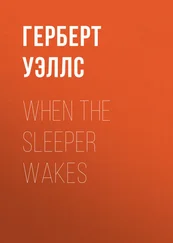“She hates black-and-white film,” Shannon tells Ron. “Even the classics. If they show her anything in black-and-white, she’s not going to be more alert, trust me. She fell asleep in the first five minutes of Casablanca. ”
Not entirely true — Tara closed her eyes during the first five minutes of Casablanca. She didn’t fall asleep until at least fifteen minutes in.
She’s grateful for the conversation swirling around her, since it helps distract her from the swaying motion of the ambulance. Being inside a moving vehicle is a memory trigger — she can see Dr. Oltamu’s face in the rearview mirror again and hear the urgent tension in his voice when he insisted that he needed to get out and walk.
Transition from ambulance to the university lab is quick and smooth and everyone here is friendly and smiling, far more eye contact than what she’s used to at the hospital. Dr. Michelle Carlisle is leading the way. She’s a tall, striking woman. She kneels to Tara’s level, looks her in the eye, and introduces herself politely but formally, as if this is just a standard doctor-patient interaction.
Tara is instantly a fan of Dr. Carlisle.
“What we’re going to do,” the doctor explains, “is both cutting-edge and quite simple, Tara. We’re going to give you the chance to watch your beloved Jaws ” — she looks at Shannon when she says this with an expression that isn’t entirely pleased — “and while you watch it, we watch you. You’ll be inside an MRI scanner. I don’t know if you’ve ever had an MRI before, but it might feel a little claustrophobic at first. Just be patient and let that pass.”
Speaking as if Tara has a choice in that matter is absurd, and yet it is deeply appreciated.
“The movie plays on a scanner above you and is reflected on a mirror that you can see comfortably. While you watch, the MRI will be recording your responses in various brain areas — auditory cortex, visual cortex, parahippocampal, frontal, and parietal lobes. We’ll compare your activation results to that of baseline tests, which will help us say definitively that you’re alert and aware, that you’re watching and engaging with the film and the story.” All of this is for the benefit of Shannon, Mom, and Rick, of course, but Dr. Carlisle addresses Tara. “Well... are we ready?”
I don’t know, Tara thinks. Because there’s one big question nobody has answered yet: What if your tests don’t show any activation?
Dr. Carlisle smiles as if Tara has given consent and stands. “Then let’s get to it.”
The doctor lied about the MRI scanner. It doesn’t make Tara feel merely a little claustrophobic. It’s petrifying.
The machine looks big enough from a distance, but when they slide Tara into it and the rest of the room vanishes from view, the rounded walls close in on her, and it’s like being in a coffin. When the hatch behind her is sealed, she’s instantly convinced that there’s not enough air in this thing, and the panic that overtakes her is the worst since her return to awareness. Maybe worse. What if she can’t breathe in here, what if she begins to hyperventilate? She can’t bang on the walls or scream or thrash; she can’t do anything to let them know that she needs out.
She’s Twitchy Tara again, worthy of her big sister’s snarky nickname, anxiety swelling to panic when she knows it’s irrational.
She’s certain each inhalation is using up her oxygen supply in this coffin-like enclosure, and now she’s worse than paralyzed — she’s paralyzed and entombed.
Be brave, damn it!
She tries to think of 1804 London Street again, of the long journey down dark halls. She can’t conjure up the image, though. And that was so long ago; that happened to a child! She doesn’t need a child’s courage, she needs a woman’s warrior heart.
The Allagash.
The name rises unbidden in her mind, and suddenly she sees the Allagash River, the big, beautiful, dangerous river that bisects northern Maine’s roadless, townless wilderness. The river flows south to north, an unusual path in North America. In her freshman year at Hammel, when she was afraid she couldn’t hack it at school, couldn’t make friends, couldn’t survive so far away from home, Tara went alone to kayak on the Allagash. Imprudent; reckless, even. But necessary. She would make her decision there — whether to stay through the semester or go back to Cleveland and enroll somewhere local, somewhere familiar. Or maybe head west, find a school near Stanford, near Shannon.
But first, she wanted to see this river.
She was afraid that day. She saw no one. She was alone in the wilderness. But gradually, the fear faded enough that she found the beauty of the place. She paddled south against the current and then rode it back to the north, and she took the kayak out of the river as the day faded and the last of the sunlight was filtered through the pines and cast a gorgeous green-gold sparkle over the water. She knew in that moment, bone-weary but renewed, that she could take whatever challenges Hammel sent her way.
She thinks of the river now, remembering the fragrance of pine needles and the feel of the cool water and the soft cry of a loon. Remembering the green and gold light on the bejeweled surface of the river, the river that flowed north instead of south. This river that she had conquered alone.
She blinks. Not a full blink, but a Tara blink, a flick of the eyes.
The tube fills with blue light. The MRI chamber darkens, and this actually helps, because she’s less aware of the squeeze of the tight space now, and she can see the movie playing on the screen.
The scene shifts to a woman running across sand dunes and alongside a battered wooden fence. A young man behind her, breathless, calling out, “What’s your name again?”
Chrissie, Tara thinks before the answer comes.
She knows it all. The most re-watchable movie of all time — all due respect to Shawshank, but the prize has to go to Jaws — and the only thing Tara has to do now is watch it once more while lighting up the correct areas of her brain.
No pressure.
Chrissie and the boy keep up their stumbling run along the darkened ocean, peeling their clothes off awkwardly, and he yells at her to slow down, then tumbles drunkenly onto the dune as Chrissie dives into the lapping sea and swims out into the dark water.
Tara tracks the action, but her mind is on the first time she saw the movie, at their house in Shaker Heights back when Dad was still alive. They’d sent her to bed, saying she was too young, but Shannon had crept in and told her she could see the screen from the back of the hallway.
Just don’t make any noise, Shannon had commanded. If you make any noise, they’ll know you’re here.
They hadn’t known. Tara had passed that test. Now it’s the same test, and she needs to fail it. Make some noise, T., she tells herself. Let them know you’re here.
Chrissie is swimming toward the buoy, alone in the sea. Smiling, tossing her blond hair. Then the camera angle changes and shows her from below. Legs dangling.
And the music starts.
The first soft notes, growing louder as the camera closes in, Chrissie floating in graceful, blissful ignorance and then—
Tara’s heart thumps with Chrissie’s first scream.
She’s seen the damn movie a hundred times, and still she cringes, no different than that night back in the dark hallway when she was seven years old.
Chrissie thrashes, screams, cries for help. Her drunk boyfriend is passed out on the shore, waves teasing the soles of his bare feet. Out in the blue-black sea, Chrissie grabs the buoy and clings to it, a moment’s safety, a last desperate chance.
Читать дальше






![Майкл Корита - Те, кто желает мне смерти [litres]](/books/396555/majkl-korita-te-kto-zhelaet-mne-smerti-litres-thumb.webp)





